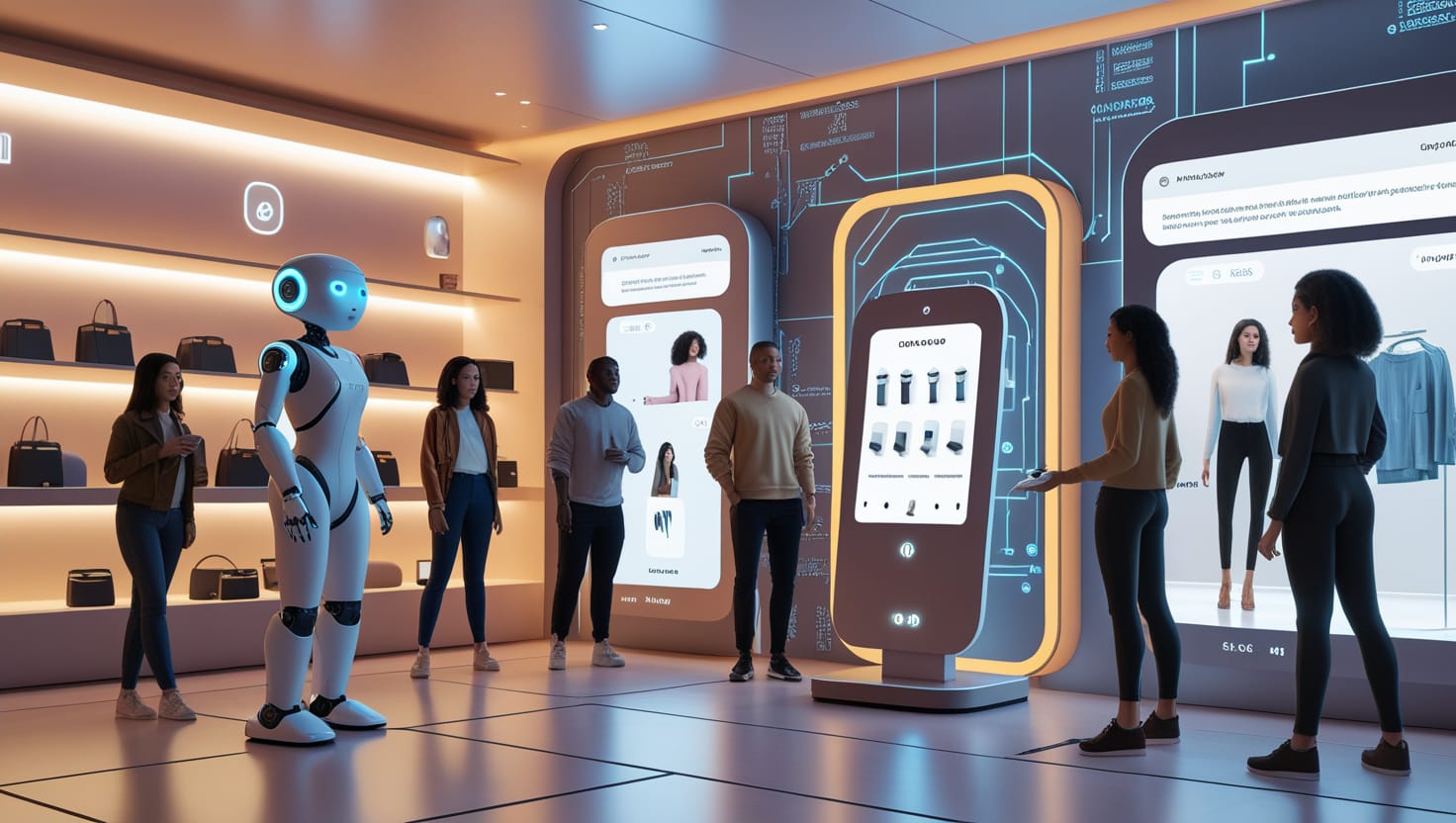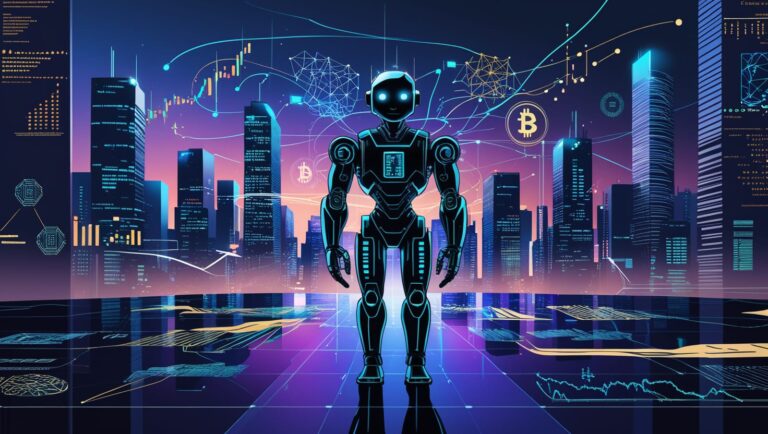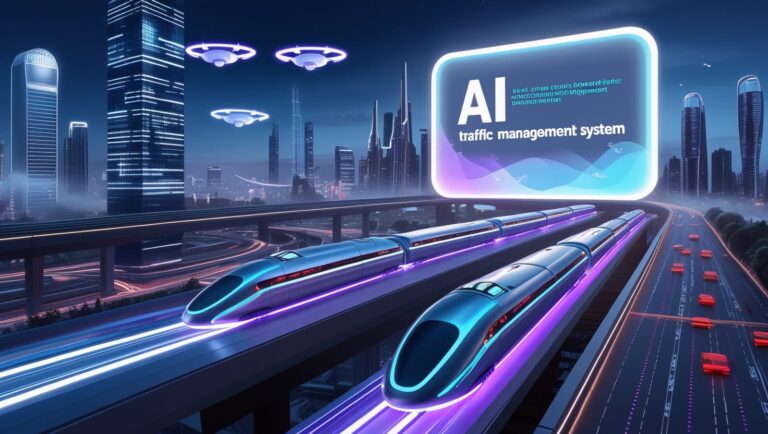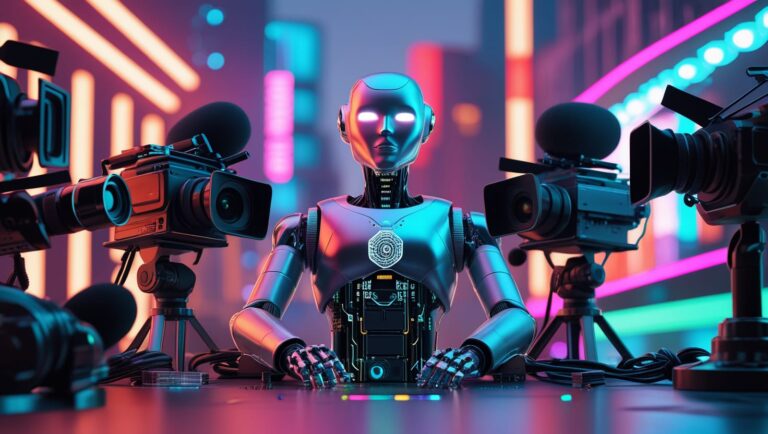Revolutionizing Shopping and Customer Experience
The retail industry is undergoing a profound transformation, driven by the integration of Artificial Intelligence (AI). From improving the shopping experience to enhancing supply chain management, AI is reshaping how retailers engage with customers and run their businesses. In this article, we’ll explore how AI is being used in retail, the benefits it offers, and the challenges that retailers face as they adopt AI-driven solutions.
What is AI in Retail?
AI in retail refers to the application of machine learning, deep learning, and data analytics to improve various aspects of the retail business. Retailers are using AI to streamline operations, create personalized customer experiences, optimize inventory management, and even predict future consumer behavior.
AI technology can analyze vast amounts of customer data, detect patterns, and make real-time decisions that enhance operational efficiency and customer satisfaction. From online shopping platforms to physical stores, AI’s impact in retail is growing rapidly, shaping the future of the industry.
Key Applications of AI in Retail
AI is already playing a pivotal role in various areas of retail, including customer service, inventory management, and personalized shopping experiences. Here are some of the most common applications:
1. Personalized Shopping Experiences
One of the most significant ways AI is transforming retail is through personalization. With AI-powered tools, retailers can analyze vast amounts of customer data, including browsing habits, purchase history, and preferences, to deliver highly personalized recommendations and offers. By tailoring the shopping experience to individual customers, retailers can increase customer loyalty and sales.
Example: Amazon’s recommendation engine uses machine learning algorithms to analyze a customer’s browsing and purchasing history to suggest products that are most likely to appeal to them. This level of personalization increases the likelihood of purchases, creating a more engaging shopping experience.
Additionally, personalized marketing campaigns, based on AI analysis of customer behavior, can deliver targeted ads that resonate with customers, boosting conversion rates and enhancing brand loyalty.
2. Chatbots and Virtual Assistants
AI-powered chatbots and virtual assistants are improving customer service in retail. These virtual assistants can handle a wide range of customer inquiries, from product questions to order tracking, without the need for human intervention. Chatbots are available 24/7, providing instant assistance and freeing up customer service agents for more complex tasks.
Example: H&M uses a chatbot called “Ada” to assist customers with inquiries about products, store locations, and promotions. This AI-powered assistant can handle multiple conversations simultaneously, providing customers with quick answers and improving overall service efficiency.
These virtual assistants also help collect valuable data on customer preferences, enabling retailers to refine their marketing strategies and enhance the shopping experience.
3. AI in Inventory Management
Inventory management is a critical aspect of retail, and AI is helping retailers manage their stock more effectively. By using AI to predict demand and track inventory levels in real-time, retailers can avoid overstocking or understocking, both of which can lead to lost sales or excess inventory costs.
AI tools can analyze historical sales data, seasonal trends, and other factors to forecast demand accurately. As a result, retailers can optimize their inventory, improve supply chain efficiency, and reduce waste.
Example: Walmart uses machine learning algorithms to predict which products will be in demand and when, helping to ensure that their shelves are always stocked with the right products at the right time. AI also enables retailers to identify slow-moving products, allowing them to adjust pricing and promotions to clear inventory.
4. AI-Powered Pricing Strategies
Dynamic pricing is another area where AI is revolutionizing retail. AI-powered pricing tools analyze multiple factors, such as customer demand, competitor pricing, market trends, and even weather conditions, to set optimal prices for products in real-time. This allows retailers to adjust their prices dynamically, maximizing revenue and staying competitive in the market.
Example: Companies like Uber and Lyft use AI to adjust pricing dynamically based on supply and demand. In retail, similar pricing models are being adopted, where AI evaluates real-time conditions and adjusts the price of products accordingly.
This pricing flexibility allows retailers to maximize profit margins during periods of high demand while offering discounts during slower periods to attract more customers.
5. Visual Search and Augmented Reality (AR)
AI-powered visual search and augmented reality (AR) are enhancing the in-store and online shopping experience. With visual search, customers can take a photo of an item they like and use AI to find similar products available for purchase. This makes it easier for shoppers to find exactly what they want, even if they don’t have the right words to describe it.
Example: ASOS, a leading online fashion retailer, uses AI-based visual search technology to allow customers to upload images and search for similar clothing items. This enhances the customer’s shopping experience, enabling them to find products based on visual features rather than keywords.
In addition, AR allows customers to virtually try on products before purchasing. For instance, beauty retailers use AI-driven AR apps to let customers “try on” makeup virtually, while furniture stores enable customers to visualize how furniture would look in their homes.
6. Supply Chain Optimization
AI is transforming supply chain management in retail by helping retailers track shipments, predict delays, and optimize routes. Machine learning algorithms can forecast demand fluctuations and adjust production schedules accordingly, ensuring that products are delivered on time and in the right quantities.
AI can also improve warehouse management, helping retailers automate tasks like order picking and sorting. This leads to more efficient fulfillment, reducing operational costs and improving delivery speed.
Example: Zara uses AI to manage its supply chain, quickly identifying trends and adjusting its production and distribution processes to meet consumer demand. This agile supply chain model allows Zara to respond to fashion trends faster than many of its competitors.
7. Fraud Detection and Prevention
AI is also playing a crucial role in detecting and preventing fraud in the retail sector. Machine learning algorithms can analyze transactions in real-time, flagging any suspicious activities such as unusual payment patterns or multiple failed login attempts. AI systems can identify potential fraud before it happens, reducing losses for retailers and protecting customers’ personal information.
Example: Shopify, an e-commerce platform, uses AI to monitor payment transactions and detect potentially fraudulent activities. The AI system analyzes past transaction data, customer behavior, and other indicators to determine whether a transaction is legitimate or fraudulent.
Benefits of AI in Retail
AI brings a multitude of advantages to the retail industry, including:
- Improved Customer Experience: Personalized recommendations, chatbots, and virtual assistants ensure that customers have a seamless and enjoyable shopping experience, both online and in-store.
- Operational Efficiency: AI optimizes inventory management, supply chains, and pricing strategies, helping retailers operate more efficiently and reduce costs.
- Increased Sales and Revenue: AI helps retailers identify trends, predict demand, and optimize product offerings, leading to increased sales and higher profit margins.
- Competitive Advantage: Retailers that adopt AI technologies can stay ahead of competitors by offering innovative solutions, improving customer engagement, and enhancing operational agility.
- Data-Driven Decision Making: AI provides valuable insights into customer behavior, market trends, and supply chain performance, enabling retailers to make more informed decisions.
Challenges of AI in Retail
Despite its many benefits, AI adoption in retail comes with challenges:
- Data Privacy and Security: Retailers must ensure that customer data is protected and comply with regulations like GDPR. Customers are becoming more concerned about how their data is being used, and retailers must be transparent about AI applications.
- Integration with Legacy Systems: Many retailers still rely on traditional systems, and integrating AI with these legacy technologies can be complex and expensive.
- Cost of Implementation: While AI offers long-term benefits, the initial investment required for AI-powered tools and infrastructure can be substantial, especially for small and mid-sized retailers.
- Skill Gaps: There is a shortage of professionals with the necessary skills to implement and manage AI systems. Retailers need to invest in training or hire AI experts to make the most of these technologies.
The Future of AI in Retail
As AI continues to evolve, its impact on retail will only grow stronger. The future of AI in retail is bright, with the potential for even more advanced applications such as fully autonomous stores, AI-driven fashion design, and hyper-personalized shopping experiences. Retailers will increasingly use AI to predict consumer behavior with greater accuracy, automate their operations, and deliver a shopping experience that is truly tailored to the individual.
In the coming years, AI could enable retailers to better understand their customers, enhance sustainability through more efficient supply chains, and offer innovative shopping experiences that blend the physical and digital worlds.
Conclusion
AI is revolutionizing the retail industry, helping businesses improve customer experiences, optimize operations, and stay competitive in an ever-evolving market. From personalized recommendations to supply chain optimization, AI is driving innovation and transforming how retailers operate. While challenges exist, the long-term benefits of AI adoption in retail are undeniable.
As the technology continues to evolve, the possibilities for AI in retail are endless. Retailers who embrace AI-driven solutions will be well-positioned to thrive in the future, offering smarter, more efficient, and more personalized shopping experiences to customers worldwide.





